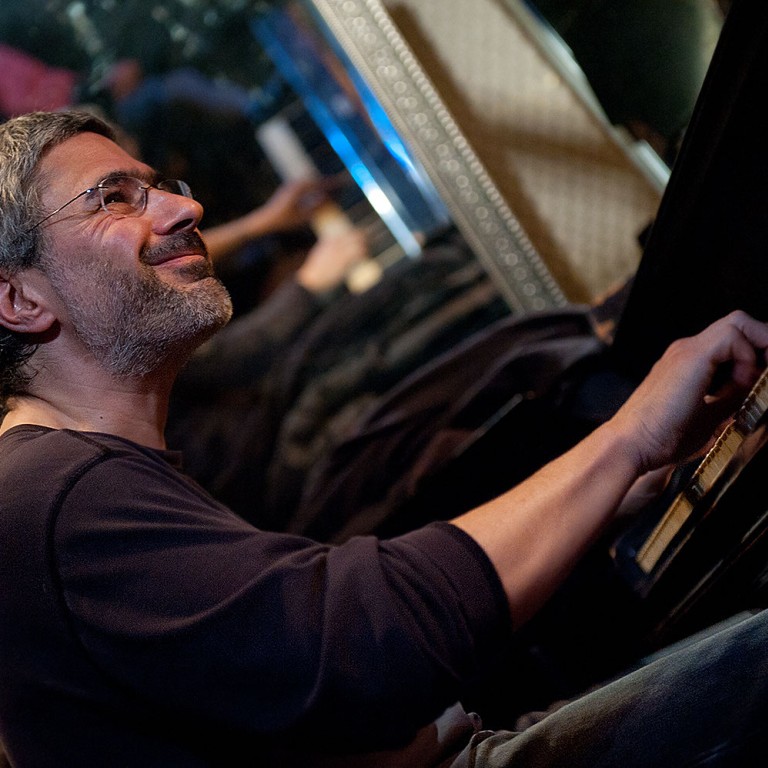
A day in the life of Hong Kong, told in classical music and jazz
Crossover work that sets out to evoke the moods and atmospheres of the city was interesting enough, but video backdrop was a distraction
Hong Kong Episodes is an attempt to musically evoke some of the many moods and atmospheres of the city and its countryside.
For the premiere of this work, by composer and conductor Lam Fung and jazz guitarist and composer Teriver Cheung, part of the World Cultures Festival 2015, the music was performed in front of projected video-graphic images – sometimes moving, sometimes not – by Anthony Lai that seldom seemed particularly related to the 12 compositions of which the work is comprised.
Starting with 0000 – indicating midnight – the music attempts to take us through a day in the life of Hong Kong, with each piece representing a two-hour segment.

The ensemble for the performance comprised a jazz quintet of Cheung on guitar, Jean-Michel Pilc on piano, Ross Pederson on drums, Sam Minaie on double bass and Timothy Sun on saxophone, plus a flautist and string section of six violins, two violas and two cellos from the Hong Kong Contemporary Music Group.
As is usually the case with attempts to bridge the worlds of classical music and jazz, the audience was unsure of what to expect, or what etiquette to observe. Do you applaud at the end of each section, or remain silent apart from clearing your throat? Should you clap to acknowledge your appreciation of the solos?
By about halfway through the first half of the concert jazz club etiquette was in the ascendant, and the musicians responded by playing less tentatively, although the quintet didn’t really hit its stride until after the interval when Pilc began to assert himself more, lifting everybody else’s game in the process.

There were passages where all the musicians on stage played together, and passages for just the jazz group and just the classical ensemble.
As is often the case with classical-jazz crossover music there seemed to be a deliberate avoidance of swing for much of the time, with the drums being used mostly for texture rather than to lay down a beat. The drum kit, however, was over-amplified for the room, and Pederson’s at times clattering cymbal work was unduly prominent.
More of the pulse of the music came from the bass. Sam Minaie plays both upright bass and electric bass guitar, but confined himself to the acoustic instrument for this performance.

Co-composers Cheung and Lam explored some interesting ideas, but perhaps not as many as a programme that ran for about 90 minutes plus an interval required.
The same was true of Lai’s video photography, which over the course of the evening became harder to regard as a counterpart to the music rather than as an unwelcome distraction from it.
I would be interested to hear this programme again – without the visuals and after a few judicious cuts.
Hong Kong Episodes, Studio Theatre, Hong Kong Cultural Centre. Reviewed October 23

